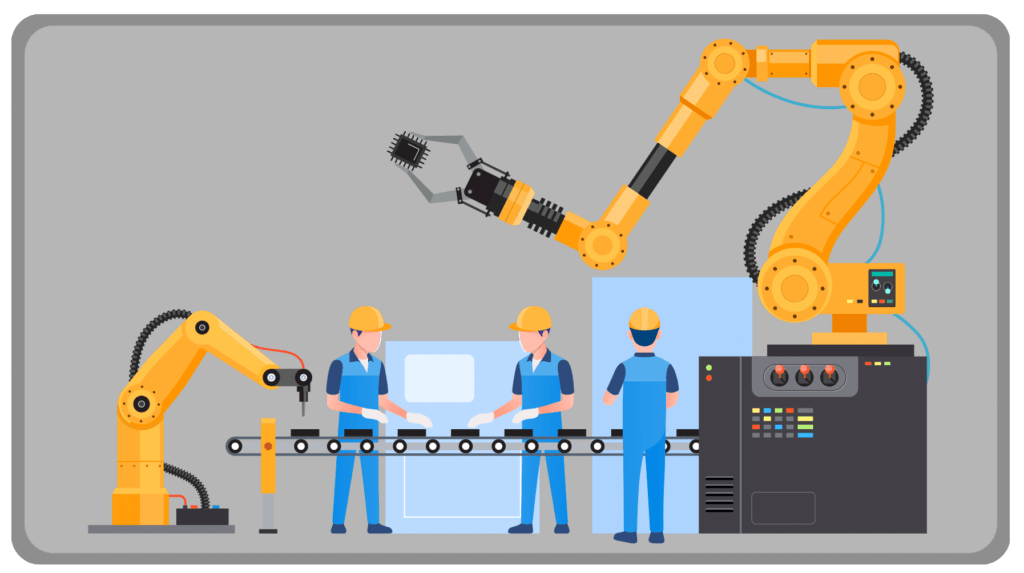Introduction
The oil and gas industry are a testing ground for innovative technological developments that will impact the future of energy extraction and production in an era characterized by constant innovation.
This evolution’s pivot point has been digitalization, which has turned conventional methods into extremely effective, data-driven procedures.
This blog aims to provide information on Oil and Gas industry technology trends that provide real-time insights for maintenance and monitoring by navigating the interconnected web of Internet of Things devices and communicating with them seamlessly across oilfields.
What are the top 12 Oil and Gas Industry Technology Trends?
As we enter 2024, the industry is going through an innovative time with unseen opportunities and challenges. The industry is in need of adopting modern technologies that boost productivity, cut expenses, and promote sustainability due to rapid digitalization, environmental concerns, and changing market dynamics.

Let’s now skim through the top 12 technological developments that will impact the oil and gas industry in 2024.
1. Internet of Things
The operations of the oil and gas sector are being transformed by IoT, which combines smart sensors, devices, and connectivity. Predictive maintenance is made possible with IoT, which maximizes efficiency and reduces downtime.
By quickly identifying abnormalities and possible threats, automated monitoring with IoT improves safety procedures. IoT also makes remote asset management possible, giving decision-makers access to deep insights.
2. Artificial Intelligence and Machine Learning
Two key technological developments that will change the oil and gas industry are AI and ML. AI systems improve reservoir characterization and make drilling outcome predictions via massive datasets.
Proactive maintenance is made easier by ML models, which also increase equipment reliability and reduce downtime. Including AI-powered decision support systems improves efficiency in operations by optimizing the production and exploration processes.
3. SAP
Supply chain optimization, blockchain transparency, and cloud-based flexibility are powered by SAP solutions. It manages human capital, facilitates ESG reporting, and supports field operations with mobile solutions.
Financial tools available in real time improve compliance and budgeting. SAP’s innovative solutions support oil and gas operations’ resilience, sustainability, and efficiency as the sector embraces digital transformation.
4. RPA
RPA uses software bots to automate rule-based, repetitive tasks throughout the intricate workflows of the industry. Routine tasks like data entry, monitoring, and reporting will be simplified by RPA, which can greatly improve operational efficiency.
These digital workers facilitate the smooth integration of disparate systems, guarantee accuracy, and minimize human error. RPA creates a paradigm shift toward increased productivity and innovation by automating repetitive tasks, freeing up human resources to concentrate on strategic decision-making and intricate problem-solving.
5. Big data and Analytics
Large datasets from the exploration, production, and refining processes are looked at by big data, and Analytics are used to extract useful information.
Real-time data analytics improves decision-making, assures cost savings, and increases operational effectiveness. This technological trend enables the oil and gas industry to achieve greater productivity and sustainability by integrating processes and decreasing downtime.
6. Digital Twins
Digital twins are digital copies of physical assets that are used to simulate and track their performance using real-time data and sophisticated analytics. They are transforming operations in the sector by building dynamic, data-driven duplicates of whole oilfields or of individual parts, like pipelines or drilling equipment.
Its insights improve decision-making, optimize operational efficiency, and enable predictive maintenance. This enables the industry to anticipate challenges, reduce risks, and enhance productivity in a highly dynamic and complex environment.
7. 3D Modelling and Visualization
Engineers and geoscientists meticulously build complex three-dimensional models of underground reservoirs, infrastructure, and drilling sites using sophisticated software and algorithms. This immersive visualization helps with strategic decision-making as well as comprehensive reservoir understanding.
Planning for extraction and resource estimation becomes more accurate when real-time data is incorporated into 3D models. This offers a thorough, dynamic overview of the intricate underground environments, which not only maximizes operational efficiency but also reduces risks.
8. Cloud Computing
Real-time decision-making will be empowered by this innovation, which will make it possible to seamlessly integrate enormous datasets from the drilling, exploration, and production phases.
Cloud platforms optimize reservoir modelling, simulation, and analysis by enabling scalable storage and computing power. Furthermore, cloud-based solutions improve teamwork by enabling geographically separated teams to collaborate effectively on challenging projects.
9. Augmented and Virtual Reality
Field technicians can benefit from immersive information during maintenance and inspections by using augmented reality, which superimposes real-time data onto the physical environment. Conversely, virtual reality improves operational readiness and safety procedures by building simulated environments for training and simulations.
In addition to optimizing workflows, AR/VR also promotes unmatched efficiency, decreases downtime, and raises the general level of safety and competence in oil and gas operations.
10. Manufacturing Execution System
Real-time insights into drilling, refining, and distribution will be provided by this sophisticated software integration that can optimize the entire production process. A comprehensive view is provided to decision-makers by MES through automation and advanced data analytics, allowing for proactive changes that boost efficiency and security.
Enhancing operational efficiency, decreasing downtime, and guaranteeing compliance with industry standards are all made possible by MES, which makes it easier to coordinate people, materials, and equipment.
11. Low-code and No-code applications
The development of low-code and no-code applications enables engineers to create distinctive applications that are suited to operational requirements, simplifying everything from supply chain logistics to reservoir management.
This technological trend promotes innovation, allowing oil and gas companies to quickly respond to changing circumstances and grab new opportunities, which ultimately maximizes productivity and cultivates a robust technological ecosystem.
12. Cybersecurity
Strong cybersecurity measures are essential as critical infrastructure grows more digitally dependent and networked. Stronger defences against cyber threats are provided by blockchain technology for secure transactions, AI-driven anomaly detection, and advanced threat detection algorithms.
Prioritizing protection against ransomware, data breaches, and unauthorized entry helps to guarantee the security of remotely controlled assets, continuous operation, and the integrity of sensitive data.
These are the top 12 technology trends that are ruling the oil and gas sector in 2024, transforming processes and promoting innovation.
Conclusion
The fundamentals of improving operations, boosting decision-making, and safeguarding vital infrastructure against changing threats are AI, SAP, automation, IoT, and strong cybersecurity.
A study in SAP Global Corporate Affairs, Aug 2020 said that “98% of the top 100 most valued brands globally have chosen SAP as their trusted technology partner.” This statistic underscores SAP’s widespread influence across diverse industries, highlighting operational excellence of some of the world’s most esteemed and valuable brands.
Opting for SAP? Then, here is your right partner.
With 20 years of experience providing technological solutions for 40+ oil and gas customers globally, KaarTech stands out as a leader in this rapidly changing field.
Our expertise is set to transform the industry, ensuring resilience, compliance, and a future-ready approach. To learn more about our services, Contact us!!
FAQ’s
What new technologies are helping the Oil and Gas industry?
Advanced technologies like AI, robotics, IoT, and data analytics are revolutionizing the Oil and Gas industry, enhancing efficiency in exploration, extraction, and production, while also promoting sustainability and safety measures.
How is digital technology changing how we extract oil and gas?
Digital technology is transforming oil and gas extraction by optimizing processes through real-time data analysis, automation, and predictive modelling. This enhances efficiency, reduces costs, and ensures safer and more sustainable operations.
How do robots and automation improve operations in the industry?
Robots and automation enhance oil and gas industry operations by performing tasks like inspections, maintenance, and data collection, improving efficiency, minimizing human risk, and ensuring consistent, precise results.
What’s the role of cybersecurity in the Oil and Gas sector today?
Cybersecurity in the Oil and Gas sector is crucial for protecting critical infrastructure from cyber threats. It safeguards sensitive data, prevents disruptions, and ensures the reliability and safety of operations.

I have been browsing online more than 3 hours as of late,
yet I by no means found any attention-grabbing article like yours.
It’s pretty worth sufficient for me. In my view, if all webmasters and bloggers made
excellent content material as you did, the internet will likely be a lot more helpful than ever before.